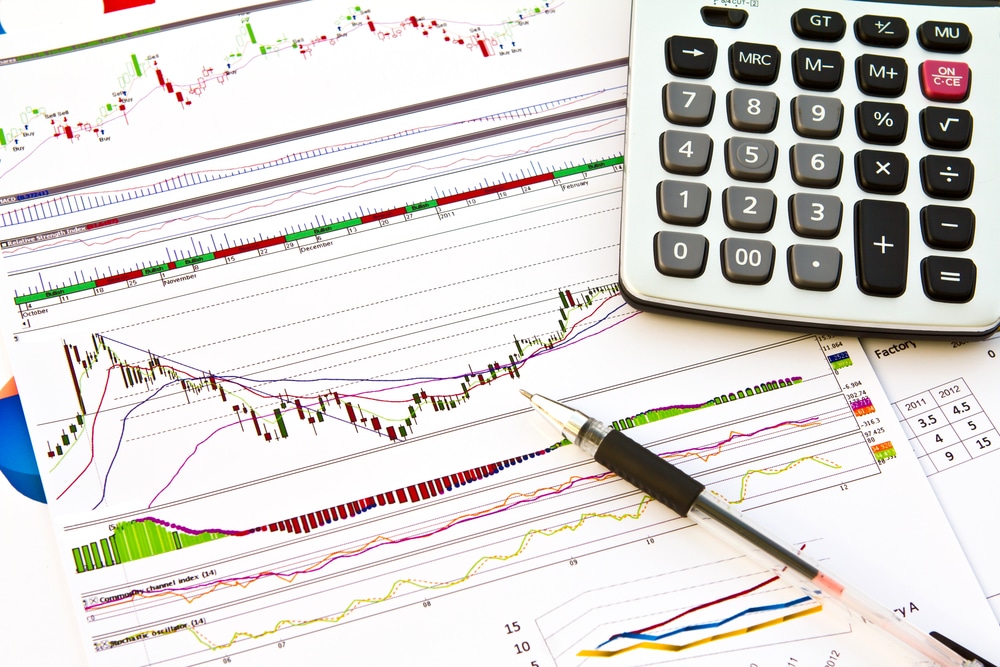
Thomas Wolfe, the legendary novelist, once said America is a place where miracles not only happen but occur all the time. Whether you love the country or not, it’s hard to argue against America as a powerhouse in most things; foreign exchange is no exception.
Traders can feel the US dollar’s influence in other currency markets. The majority of forex transactions are denominated against the greenback. Economic data based on the Joe Biden-led republic is always accompanied by massive speculative interest globally from fundamental analysts.
The economic calendar lists a seemingly overwhelming number of news releases pertaining to the ‘dead presidents’ (slang term for the US dollar), making it hard to judge significance.
For your convenience, we’ll outline the three most impactful economic indicators for the US economy as a fundamental forex analyst.
Basic fundamentals of the US dollar
As expected, the US has been a highly developed country for centuries, accounting for about a quarter of the global Gross Domestic Product (GDP). America is the globe’s second-largest exporter and largest importer.
Despite only contributing about 4% of the entire world population, almost 30% of the world’s wealth comes from America. Some of the industries contributing significantly to the US economy include technology, healthcare, construction, manufacturing, finance, real estate, and many more.
What’s unique about USD is its undisputed position as a reserve currency and, to some, a safe-haven currency. As it’s the most widely used and held, there will always be demand for the greenback.
Even when the country is doing poorly economically, investors will generally perceive the dollar as valuable regardless. While, of course, there are several influential economic indicators (which we’ll cover in a bit), the dollar’s status as a reserve currency makes it stand out from the rest.
Although the greenback goes neck and neck many times against other well-established currencies like the euro and the British pound, less-traded currencies will typically be far less valuable against the dollar.
The three most impactful USD economic indicators
Let’s now dive deeper into the impactful economic indicators for USD.
Interest rates
The interest rate (or the federal funds rate in the US) is the rate charged on the borrowing done by banks which affect other interest rates as well. America’s central bank is the Federal Reserve or simply the Fed.
Like any central bank, the Fed oversees the interest rate by managing inflation and allowing for expansive economic growth. This economic indicator is considered one of the most essential in any forex market.
Interest rates affect the level of borrowing, saving, foreign investment, inflation, and overall currency supply/demand. There are two ways to perceive any change to the interest rate in the United States economy.
If the Fed cuts the rate, it may naturally make the dollar less valuable (as there’d be less foreign investment). Simultaneously, this move can also mean the dollar may gain value as rate cuts primarily foster economic growth through cheaper debt for businesses and individuals.
Therefore, you’d need to understand other factors affecting the US before concluding whether the currency is likely to be worth more or not based on a higher or lower interest rate.
Presently, the Fed has maintained a 0.25% funds rate for almost a year and a half to stimulate the economy due to the pandemic’s negative impact. Interest rate data is released eight or nine times yearly on a pre-specified Wednesday of a particular month at around 14h15 NY time.
CPI (Consumer Price Index)
The CPI is used as an ‘inflation index’ of sorts by accounting for a weighted average of consumer prices for goods and services. Interest rates and the CPI share an inverse relationship.
If economic growth is stagnating, it typically means interest rates have been rising, which decreases inflation. In this scenario, fewer people and businesses are spending money, plus the borrowing costs are more expensive (due to the higher rates).
All these factors contribute to a reduced money supply. Conversely, if interest rates are low, central banks plan to stimulate the economy. This action leads to a rise in inflation as more spending and borrowing occurs, magnifying money circulation.
Since new CPI data comes out monthly, analysts may get a heads-up on the interest rates through the index.
CPI data is compiled and released by the US Bureau of Labor Statistics. This body publishes the information typically around the 10th to the 15th every month at 08h30 NY time.
GDP (Gross Domestic Product)
The GDP is one of the leading indicators for evaluating an economy’s health, broadly measuring the total value added by finished goods and services produced in a country.
Countries operate very much like businesses, and if they profit after expenses, it creates more demand for their currency (and vice versa).
In the United States, we have two preliminary reports (released a month apart) and a final report (released in March, June, September, and December) published by the Bureau of Economic Analysis.
All three come out every last Wednesday or Thursday at 08h30 or 09h30 NY time, with the latter being held in higher significance. A higher than expected GDP reading is taken as a bullish sign for the dollar, while the opposite is true when the figures are lower than previously.
Final word
So, what are some of the methods for best utilizing this information? It’s always beneficial to keep an economic calendar to stay ahead of the releases and preferably use reminders beforehand.
Ultimately, a savvy long-term fundamental analyst is looking for trends in the numbers and compares these against the base or quote currency. We should remember part of the challenge with this analysis is dealing with two different markets.
So, for instance, if the funds rate has increased, you’d need to see whether it’s higher or lower than the interest rate pertaining to the other currency. Another crucial aspect is the market expectations.
What the market anticipates about a specific indicator is often more significant than the actual figures eventually released. Here, traders would look at the price action beforehand for any clues along with what has been forecasted.
Overall, fundamental analysis is a complex subject, and this article should be a guide in helping you identify only the most significant data.








Leave a Reply